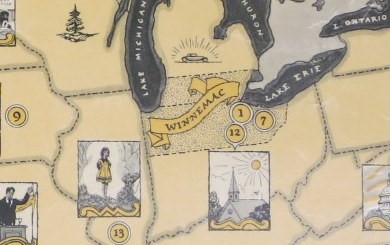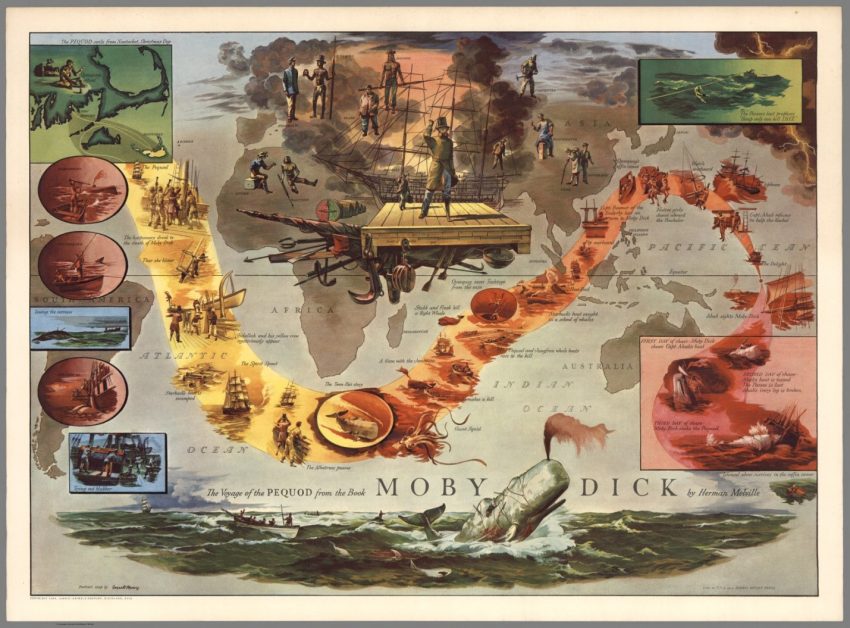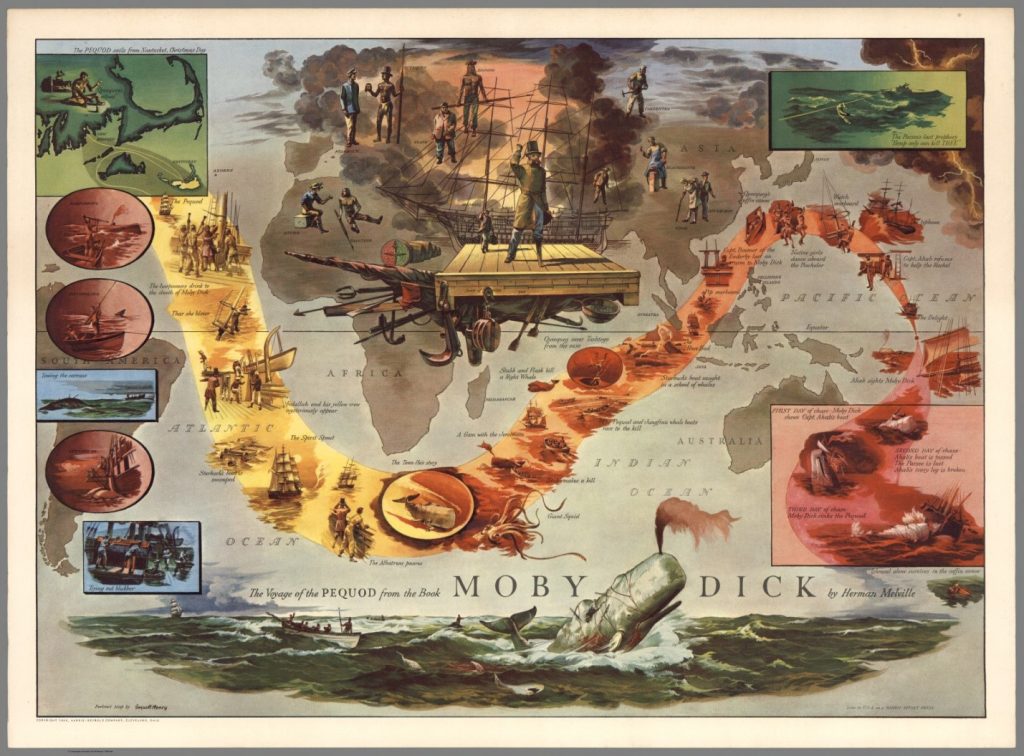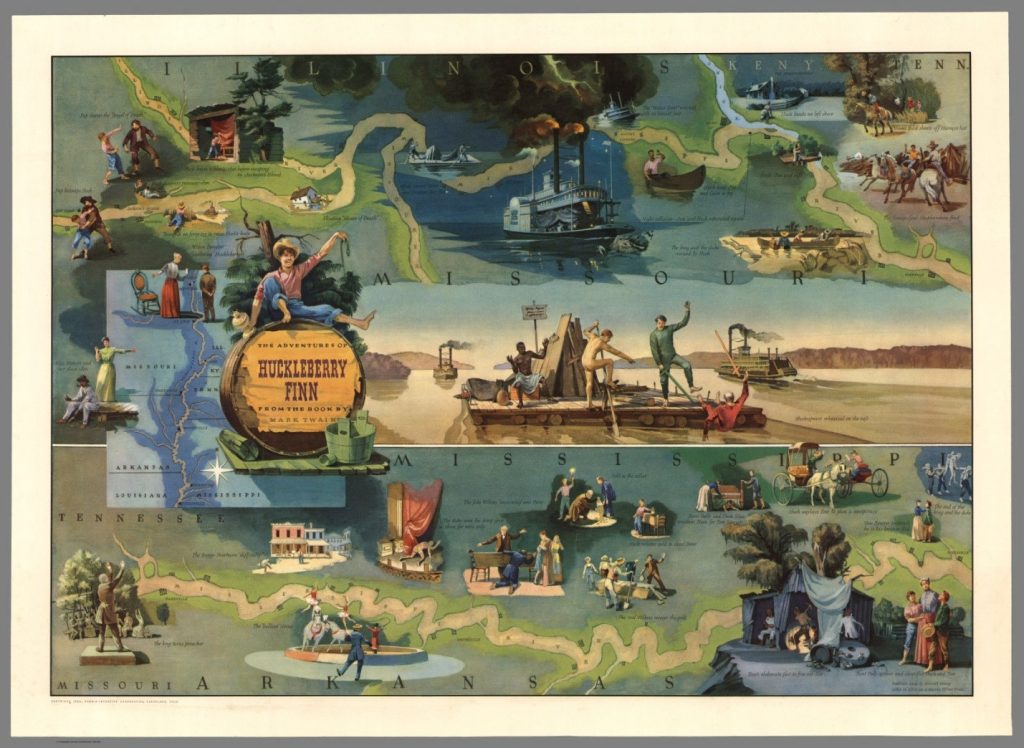This blog post is written by Milena Morozova, who is a postgraduate student at Moscow State University, Russia. Following a conversation between Milena and Professor Vladimir Kalutskov (Moscow State University), they introduce us to an interesting and developing field in geography – literary geography.
Writing a PhD dissertation is not only about reading and analyzing books and articles. It is not narrowed to visiting the places you are studying and exploring the landscape there. It also requires establishing a dialogue, many dialogues – with the authors you are reading, with yourself, with other scholars in the field, with the people living in the area you are studying, and most importantly with your scientific advisor. So, even though this talk seeks to show that literary geography is an interesting new developing field of research that requires specialists from both literature and geography, it is also an example of the dialogue that can be established and that can lead you to new answers and questions for your studies.
“When a map becomes a piece of art…”
Vladimir Kalutskov: Have you ever thought about the fact that in some languages of the Slavic group the words “map – karta” and “painting – kartina” have the same root “kart”?
Milena Morozova: I have never thought about it, to be honest. But there is so much difference between a painting and a map (in the way most people understand it). In comparison to a painting, a map has grid lines, a scale and a legend that allows us to interpret a map. Besides, a map is designed to reflect accurately the real geographic space, while a painting displays the artist’s vision of the landscape and can present the imaginary space.
Vladimir Kalutskov: Can the same be said for literary maps?
Milena Morozova: Well, a literary map often differs from other types of maps and in this sense it has more features of a picture than a map.
Vladimir Kalutskov: Could you name some of them?
Milena Morozova: One of the features of a literary map that allows us to distinguish it from a map in physical geography, for example, is its ability to show absolutely imaginary literary space. A literary map marks places and routes depicted in novels, short stories and poems.
Vladimir Kalutskov: How can we call such literary maps?
Milena Morozova: We call them associative literary maps, i.e. the maps of the places described in literature.
Vladimir Kalutskov: Alright. So, a literary map is a map of the imaginary space?
Milena Morozova: It’s not just the imaginary space, because we can also map the place of the writer’s birth, his encounters, walks, trips and other places related to his life.
Vladimir Kalutskov: Will we map memorial places on such maps, e.g. commemorative plaques, museums, monuments of the writer, as well as the streets and organizations carrying the writer’s name?
Milena Morozova: Yes, we will. That is why we call them memorial literary maps…
Vladimir Kalutskov: I think we can single out one more type of literary maps.
Milena Morozova: What type is it?
Vladimir Kalutskov: Complex literary maps, which allow to depict the intertwined spaces of the writer’s life and the imaginary space of his works. These maps show associative and memorial landmarks.
Milena Morozova: You are right. Besides, each literary map type can be presented on four scales: the world scale, the scale of a country, the regional scale and the local scale.
Vladimir Kalutskov: Have you ever come upon interesting cases of combining real and imaginary literary spaces on a map?
Milena Morozova: Sure. For instance, the literary space of a map conducted in 1934 by Carl Van Doren entitled “A Map of Sinclair Lewis’ United States as it appears in his novels”. In his novel “Arrowsmith” Sinclair Lewis gave a detailed description of the place where his imaginary state Winnemac is located: “The state of Winnemac is bounded by Michigan, Ohio, Illinois, and Indiana, and like them it is half Eastern, half Midwestern”. Carl Van Doren uses this description and squeezes imaginary Winnemac between real US states on his literary map.

Vladimir Kalutskov: That’s an excellent example! Are there any other features that can turn a map into a painting, except the fact that both can show the space of imagination?
Milena Morozova: When a literary map composer depicts imaginary space there are no strict rules which regulate the content and the design of the map, so the map composer (artist of the literary map) can use all his creativity. The act of composing a map becomes the act of painting. So, making a literary map often requires more than a cartographer. A literary map of a high quality is a result of collaboration of scholars, cartographers, illustrators and calligraphers.
Vladimir Kalutskov: Are there any examples of literary maps that look more like a painting than a map?
Milena Morozova: In the middle of the XX century an illustrator and a cartographer Edward Henri composed nine literary maps for the annual Cleveland calendar. In 1956 Edward Henri made the literary map of associative places called “The Voyage of the Pequod from the Book Moby Dick”.
All the places marked on the map are taken from the novel of Herman Melville “Moby-Dick”. It is interesting that the illustrations to the novel are the key component of the map while the literary places on the map serve only as a background. The route unfolds as the story evolves. The main scene is brought out into an additional map. The map is decorated with illustrations to the novel and the pictures of thirteen main characters. Just look at it. It is not a map but a true painting.
Vladimir Kalutskov: Are the other literary maps of Edward Henri composed in a similar way?
Milena Morozova: Yes, they are. For example, the most important literary places on the map “The Adventures of Huckleberry Finn” are linked to an illustration and a quote from the novel. Though using such a map can be confusing because of the prevalence of artistic elements over cartographic ones. It is important that this map successfully transfers the image of the location where the plot takes place (the shores of Missouri and Mississippi rivers). So this map is not a simple cartographic representation of space but a painting. I must say, American literary mapping merits closer attention…
Vladimir Kalutskov: So, a literary map gradually turns into a painting when the real and imaginary space of the book is depicted on the map but it is up to the composer to decide whether to finish the process of transformation. The more literary images are depicted on a literary map, the closer it is to a painting.
Milena Morozova – postgraduate student at Moscow State University, Russia. The Postgraduate Representative of the Social and Cultural Geography Research Group (RGS) and the Secretary of the Cultural Geography Committee of the Moscow Branch of the Russian Geographical Society.
Vladimir Kalutskov – professor, PhD in Geography, lecturer at Moscow State University, Russia. The Chair of the Cultural Geography Committee of the Moscow Branch of the Russian Geographical Society.


